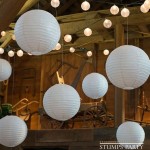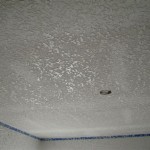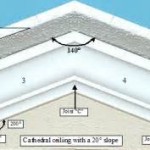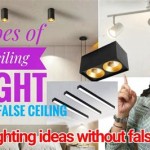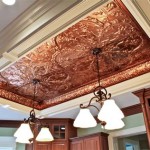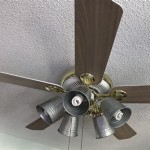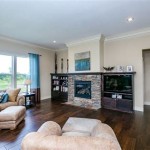Gallery False Ceiling Design For Living Room
The living room, often the heart of a home, serves as a space for relaxation, entertainment, and social gatherings. As such, homeowners frequently seek to enhance its aesthetic appeal and functionality. A gallery false ceiling design can significantly contribute to achieving these goals, offering a blend of visual interest, improved acoustics, and concealed utilities.
Gallery false ceilings, characterized by their intricate designs, multiple levels, and often incorporating artistic elements, represent a sophisticated approach to interior design. They transcend the functionality of a simple suspended ceiling, becoming a focal point in the living room. This article explores various aspects of gallery false ceiling designs for living rooms, including their benefits, design considerations, material options, and installation aspects.
Benefits of Gallery False Ceilings in Living Rooms
Gallery false ceilings offer a multitude of advantages that extend beyond mere aesthetics. These benefits contribute to both the functionality and the perceived value of the living space.
Enhanced Aesthetics: Perhaps the most significant benefit is the dramatic improvement in the room's visual appeal. Gallery designs allow for the creation of unique and personalized spaces. The use of different levels, textures, and lighting techniques creates a sense of depth and dimension, transforming a plain ceiling into a work of art. Intricate patterns, geometric shapes, and the incorporation of artistic elements can reflect the homeowner's individual style and preferences.
Improved Acoustics: Open living spaces can often suffer from poor acoustics, resulting in echoes and amplified noise. Gallery false ceilings, especially those incorporating sound-absorbing materials, can significantly improve the acoustic environment. The textured surfaces and layered construction help to diffuse sound waves, reducing reverberation and creating a more comfortable listening experience. This is particularly beneficial in living rooms used for home theaters or frequent social gatherings.
Concealed Utilities: False ceilings provide a practical solution for concealing unsightly utilities such as wiring, ductwork, and plumbing. This results in a cleaner and more organized appearance. The space above the suspended ceiling allows for easy access to these utilities for maintenance and repairs, without requiring extensive demolition or disruption. This feature is particularly valuable in older homes where utilities may be exposed or awkwardly positioned.
Enhanced Lighting Options: Gallery false ceilings offer a canvas for incorporating various lighting options, including recessed lighting, cove lighting, and ambient lighting. These lighting solutions can be strategically placed to highlight specific features of the ceiling design or to create a desired mood and atmosphere. The ability to control and customize the lighting enhances the functionality and aesthetic appeal of the living room.
Thermal Insulation: Depending on the materials used, gallery false ceilings can contribute to improved thermal insulation within the living room. Materials like mineral wool or fiberglass can help to reduce heat transfer, keeping the room cooler in the summer and warmer in the winter. This can lead to energy savings and increased comfort for the occupants.
Key Design Considerations for Gallery False Ceilings
Designing a gallery false ceiling requires careful consideration of several factors to ensure it complements the overall aesthetic of the living room and functions effectively. These considerations include the room's dimensions, existing architectural features, and the desired style and atmosphere.
Room Size and Height: The size and height of the living room are critical factors in determining the scale and complexity of the gallery ceiling design. In smaller rooms, a simpler design with fewer levels may be more appropriate to avoid overwhelming the space. Lower ceilings may require a flatter design to maintain headroom. Larger rooms with higher ceilings can accommodate more elaborate and multi-layered designs. It is essential to maintain proper proportions to create a balanced and harmonious look.
Architectural Style: The design of the gallery false ceiling should complement the existing architectural style of the home. A modern living room may benefit from a sleek and minimalist design with clean lines and geometric shapes. A traditional living room may be better suited for a more ornate design with intricate details and classical motifs. The goal is to create a cohesive and integrated look that enhances the overall aesthetic appeal of the home.
Lighting Integration: Lighting plays a crucial role in accentuating the features of a gallery false ceiling and creating the desired ambiance. Consider the placement of recessed lights, cove lighting, and other fixtures to highlight specific design elements and create depth and dimension. Different lighting techniques can be used to create a variety of moods, from warm and inviting to bright and energetic. The lighting should be carefully planned to complement the ceiling design and enhance the overall aesthetic of the living room.
Material Selection: The choice of materials for the gallery false ceiling will significantly impact its appearance, durability, and cost. Popular materials include gypsum board, plaster of Paris (POP), wood, metal, and fabric. Each material offers distinct advantages and disadvantages in terms of aesthetics, cost, and ease of installation. The selection should be based on the desired aesthetic, budget constraints, and the specific requirements of the design.
Color Palette: The color palette of the gallery false ceiling should complement the overall color scheme of the living room. Lighter colors can make the room feel more spacious and airy, while darker colors can create a more intimate and cozy atmosphere. Consider using accent colors to highlight specific design elements or to create visual interest. The color palette should be carefully chosen to create a cohesive and harmonious look that enhances the overall aesthetic appeal of the living room.
Materials Commonly Used in Gallery False Ceilings
The selection of materials is a critical aspect of gallery false ceiling design, impacting both the aesthetics and functionality of the structure. Different materials offer varying degrees of durability, cost-effectiveness, and design flexibility.
Gypsum Board: Gypsum board, also known as drywall, is a widely used material for false ceilings due to its versatility, affordability, and ease of installation. It can be easily cut and shaped to create a variety of designs and is readily available in different thicknesses and sizes. Gypsum board is also fire-resistant and can be painted or textured to achieve the desired look. However, it is susceptible to moisture damage and may require specialized coatings in humid environments.
Plaster of Paris (POP): POP is a popular choice for creating intricate and decorative designs in false ceilings. It is a lightweight material that can be easily molded and sculpted to create complex shapes and patterns. POP is also relatively fire-resistant and can be painted or textured. However, it is more brittle than gypsum board and may be prone to cracking if not properly installed. Skilled craftsmanship is required for intricate POP designs.
Wood: Wood can add warmth and natural beauty to a gallery false ceiling. It can be used in various forms, including solid wood planks, plywood, and veneer. Wood ceilings can be stained or painted to achieve the desired look. However, wood is susceptible to moisture damage and may require regular maintenance to prevent warping or rotting. It is also more expensive than gypsum board or POP.
Metal: Metal offers a sleek and modern aesthetic for gallery false ceilings. Aluminum and steel are commonly used metals, offering durability and resistance to moisture and fire. Metal ceilings can be perforated or textured to improve acoustics and create visual interest. However, metal can be more expensive than other materials and may require specialized installation techniques.
Fabric: Fabric can be used to create soft and textured surfaces in gallery false ceilings. Stretched fabric systems offer a seamless and visually appealing solution for covering large areas. Fabric can also improve acoustics by absorbing sound waves. However, fabric is susceptible to staining and may require specialized cleaning. It is also less durable than other materials.
The selection of materials ultimately depends on the desired aesthetic, budget constraints, and the specific requirements of the design. A combination of materials can also be used to create unique and visually appealing gallery false ceilings.

Best False Ceiling Design Ideas For Living Rooms In 2025 Gyproc

Modern False Ceiling Designs For Drawing Rooms Elevate Your Space Beautiful Homes

Gallery False Ceiling Designs By Expert Professionals Ceilings

50 Budget Friendly False Ceiling Designs For Every Home 2025

Best False Ceiling Design Ideas For Living Rooms In 2025 Gyproc

False Ceiling Designs Ideas To Make Your Living Room Look Amazing

False Ceiling Designs For Living Room Photos Best

Cost Of False Ceiling Design For Living Room Decorpot Home Interiors

All You Need To Know About Pvc Ceilings Beautiful Homes

False Ceiling Design For Drawing Room 12 Mm At 55 Sq Ft In Ghaziabad Id 2854157620430
Related Posts

